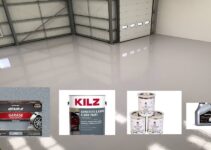Garage Floor Drain Ideas
Garages often serve as multifunctional spaces a place to park vehicles, store tools, and even work on DIY projects. One common challenge many homeowners face is dealing with issues related to garage floor drainage.
A wet or flooded garage floor can lead to various problems, including water damage, mold growth, and safety hazards. To combat these issues, investing in effective garage floor drain systems is crucial.
In this article, I’ll share the different types of garage floor drains available, how to choose the right one for your garage, and installation tips.
Why Are Garage Floor Drains Important?
Garage floor drainage is essential for several reasons:
- Preventing Water Damage: Water accumulation on the garage floor can lead to damage to the concrete, causing cracks, erosion, and deterioration over time.
- Mold Prevention: Damp environments provide the ideal conditions for mold and mildew growth. A functioning garage floor drain helps keep the area dry, reducing the risk of mold-related issues.
- Safety: Wet garage floors can become slippery and pose a safety hazard. Effective drainage minimizes the risk of accidents caused by slippery surfaces.
- Protection of Valuables: Many individuals use their garages to store valuable items such as vehicles, tools, and equipment. Adequate drainage prevents water damage to these possessions.
5 best Garage Floor Drain Ideas
1. Round or Square Floor Drains
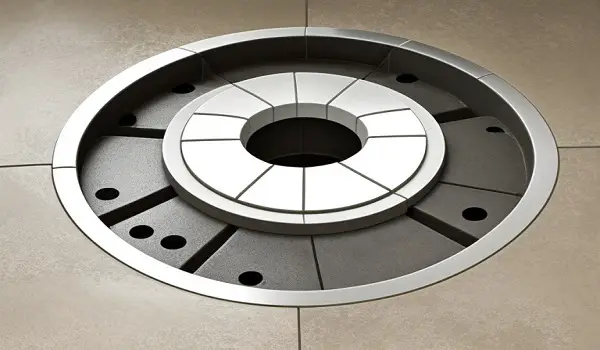
Among the most prevalent options, round or square floor drains offer simplicity and functionality. Constructed from durable materials such as cast iron or stainless steel, these drains are equipped with a grated cover.
They efficiently collect water and debris, preventing clogs and ensuring a smooth flow into the drainage system. This design is ideal for general water removal needs.
2. Trench Drain
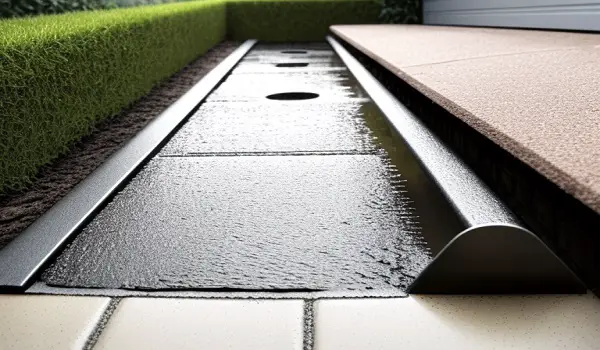
Trench drains are a versatile choice, particularly suited for garages prone to heavy water runoff, especially in wet climates.
These drains consist of a long, narrow trough embedded within the garage floor. They effectively channel water away from the floor surface, minimizing the risk of flooding. Trench drains are especially beneficial for those seeking to manage substantial water flow.
3. Slot Drains
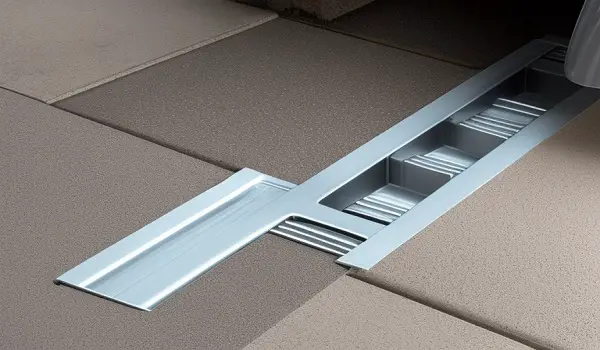
If your garage requires swift water removal, slot drains are a suitable option. Comprising small, parallel channels embedded within the concrete floor, slot drains can rapidly drain large volumes of water.
This feature makes them a preferred choice for garages frequently used for car washing or located in regions with frequent heavy rainfall.
4. Combination Drains
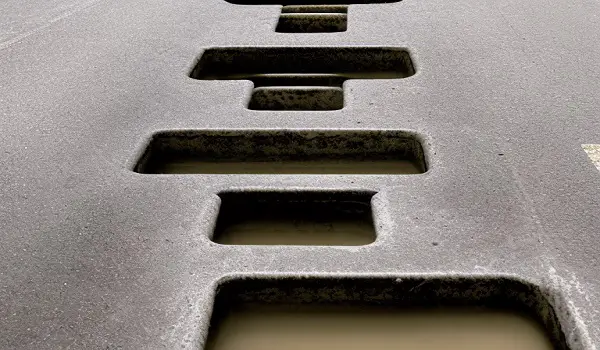
Combination drains offer a customized approach to garage floor drainage. By merging two or more drain types, such as combining a trench drain with a round or square floor drain, you can enhance drainage efficiency.
This flexibility allows you to address specific water management needs in your garage.
5. Raised Floor Drains
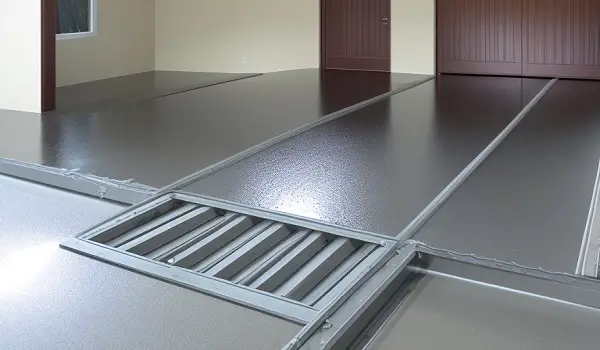
When safeguarding valuable possessions like cars or motorcycles is a priority, raised floor drains provide a strategic solution.
Installed on elevated platforms within the garage floor, these drains help protect your valuables from potential water damage. They’re particularly beneficial for garages that serve as storage spaces for important belongings.
Choosing the Right Garage Floor Drain
Selecting the right garage floor drain requires careful consideration of several factors:
- Water Volume: Assess how much water your garage is likely to encounter. This will help determine the necessary drainage capacity.
- Floor Layout: Consider the layout of your garage floor. Some drain types might be more suitable for specific floor plans.
- Intended Use: Think about how you use your garage. If you frequently wash vehicles, a slot drain might be more appropriate. If water runoff is a concern, a trench drain could be the solution.
- Budget: Different drain types come at varying costs. Balance your budget with your drainage requirements.
- Maintenance: Some drains require more maintenance than others. Factor in the time and effort you’re willing to invest in upkeep.
Installing a Garage Floor Drain
Depending on your DIY skills and the complexity of the chosen drain system, you might consider installing a garage floor drain yourself or hiring a professional. If you’re confident in your abilities, follow these steps:
- Gather Tools and Materials: Acquire all the necessary tools and materials for the installation, including the drain components, concrete-cutting tools, and adhesives.
- Prepare the Area: Clear the garage floor and mark the area where the drain will be installed. Ensure the floor surface is clean and even.
- Cut the Opening: Use appropriate tools to cut an opening in the concrete floor for the drain.
- Install the Drain: Follow the manufacturer’s instructions to install the chosen drain system. Ensure a secure fit and proper sealing.
- Test the Drain: Pour water into the drain to ensure it functions correctly and efficiently directs water away from the floor.
If you prefer a professional touch, consider hiring an experienced plumber or contractor familiar with garage floor drain installations.
Maintaining a Garage Floor Drain
Proper maintenance is key to ensuring the longevity and effectiveness of your garage floor drain. Here are some maintenance tips:
- Regular Cleaning: Routinely clean the drain and its components to prevent debris buildup and clogs. Use a brush or hose to remove dirt and grime.
- Periodic Inspection: Check for any signs of damage, rust, or wear. Address issues promptly to prevent further deterioration.
- Preventing Clogs: Use drain covers or grates to prevent large debris from entering the drainage system. Avoid pouring oil, grease, and other harmful substances down the drain.
- Flushing the Drain: Occasionally, flush the drain with water to ensure proper flow and prevent minor clogs.
Conclusion
In the realm of maintaining a functional and safe garage, proper garage floor drainage is paramount. By investing in the right drain system, you can prevent garage floor leaks, flooding, and associated issues.
Assess your garage’s specific needs, choose the appropriate drain type, and either embark on a DIY installation journey or enlist the expertise of a professional.
Regular maintenance ensures that your chosen drain system continues to operate optimally, safeguarding your garage space and the valuable items it houses.
With these garage floor drain ideas, you’re well on your way to keeping your garage dry, clean, and safe for years to come.
